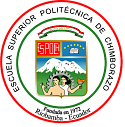Performance Analysis between MONGODB and COUCHDB using ISO/IEC 25000 Standard
DOI:
https://doi.org/10.47187/perspectivas.vol2iss2.pp13-20.2020Keywords:
MongoDB, CouchDB, ISO/IEC 25010, JMeter, Data Base NoSQLAbstract
The NoSQL databases have emerged to respond to problems of scalability and performance, those which in general, relational databases cannot cover. The great flexibility and the optimization possibilities in their designs make them an attractive variant to take into account when developing information management applications. The main objective of the research project was to carry out a comparative study between MongoDB and CouchDB using the ISO/IEC 25010 standard, in order to analyze and measure the performance of the NoSQL database managers, regarding the consumption of resources used. The result revealed that MongoDB was slightly higher than CouchDB, demonstrating that NoSQL databases have better performance when managing large volumes of data.
Métricas
References
Angeles Antaño, José Castro, and René Valencia. Migracion de bases de datos sql a nosql. Revista Tlamati, Especial, 3:144–148, 2014.
Odalys Aranda, Antonio Rodríguez, and Mayra Mugica. Diagnóstico sobre la gestión documental y de archivos en la universidad central marta abreu de las villas. cuba: Caso de estudio. Revista Española de Documentación Científica, 35(4):573–598, 2012.
Kent Beck. Extreme Programming Explained: Embrace Change. Addison-Wesley, 2000.
Vanessa Berlanga, and María Rubio. Clasificación de pruebas no paramétricas. Cómo aplicarlas en spss. REIRE. Revista d’Innovaciói Recerca en Educació, vol. 5, num. 2, p. 101-113, 2012.
Kristina Chodorow. MongoDB: the definitive guide. Second Edition, USA: O’Reilly Media, Inc., 2013
Hansel del Busto, and Osmel Enríquez. Bases de datos nosql. Revista Telemática, 11(3):21–33, 2013.
Patricia Gallo. Gestión documental en las organizaciones. Editorial UOC, 2011.
Jing Han, Haihong E, Guan Le, and Jian Du. Survey on nosql database. In 6th international conference on pervasive computing and applications, pages 363–366. IEEE, 2011.
Harol H, and Carlos VALENZUELA. NoSQL, la nueva tendencia en el manejo de datos. Tecnología Investigación Y Academia, vol. 4, no 1, p. 147-150, 2016.
ISO, N. Normas iso 25000. Obtenido de https://iso25000.com/index.php/normas-iso-25000/, 2015.
Apache JMeter. Apache JMeter. Online. https://jmeter.apache.org/, 2016.
ActiveXperts, SMS. ActiveXperts SMS Messaging Server. Online. https://www.activexperts.com/sms-messaging-server/, 2018.
NetBeans, I. D. E. Netbeans IDE. Online. https://netbeans.org/, 2018.
Juan Mogollón, and Telma de Carvalho. La web semántica y sus usos en los procesos de documentación organizacional. Informação & Informação, 22(2):437–448, 2017.
Marianela Morejón. La información en bases de datos nosql y su incidencia en la generación documental de la secretaria general del honorable consejo universitario. Master’s thesis, Universidad Técnica de Ambato. Facultad de Ingeniería en Sistemas, 2018.
Francisco Moreno, Juan Quintero, and Robinson Rueda. A performance comparison between oracle and mongodb. Ciencia e Ingeniería Neogranadina, 26(1):109–129, 2016.
Alexander Castro, Juan González, and Mauro Callejas. Utilidad y funcionamiento de las bases de datos nosql. Facultad de Ingeniería, 21(33):21–32, 2012.
Roger Pressman. Ingeniería del software. Un enfoque práctico. Séptima Edición. McGrawHill, 2010.
Solid, I.T. DB-Engines ranking. Solid IT. Obtenido de https://dbengines.com/en/ranking, 2020
SPSS, IBM. IBM SPSS Statistics for Windows, version 25. Armonk, NY:IBM SPSS Corp, 2017.
Friends, Apache. XAMPP. Obtenido de https://www.apachefriends.org/de/index.html, 2018.
Yanette González and Yenisleidy Fernández. Patrón Modelo-Vista-Controlador. Revista Telemática 11.1, pp. 47-57, 2012.
Published
How to Cite
Issue
Section
License
Copyright (c) 2020 Miryan Estela Narváez, Pablo Ronny Calapucha Grefa, Marco Vinicio Tarco Caisa, Pamela Alexandra Buñay Guisñan

This work is licensed under a Creative Commons Attribution 4.0 International License.
Copyright
The authors of the manuscripts will retain their copyright on their articles published in Pespectivas Journal. These rights allow the authors to present their manuscripts in public, prepare derivative works, reproduce them physically by printing and distribute them on their social or research networks. These rights will remain unchanged as long as the authors respect the publication and free access policy of Perspectivas Journal.
Publication Rights
Perspectivas Journal reserves all first publication rights on each of the articles that the authors have sent to its review and publication process. It implies that authors will only exercise their copyright if they state the source and origin of the publication correctly, mainly when they distribute, share, present, or use their articles' total or partial content.














